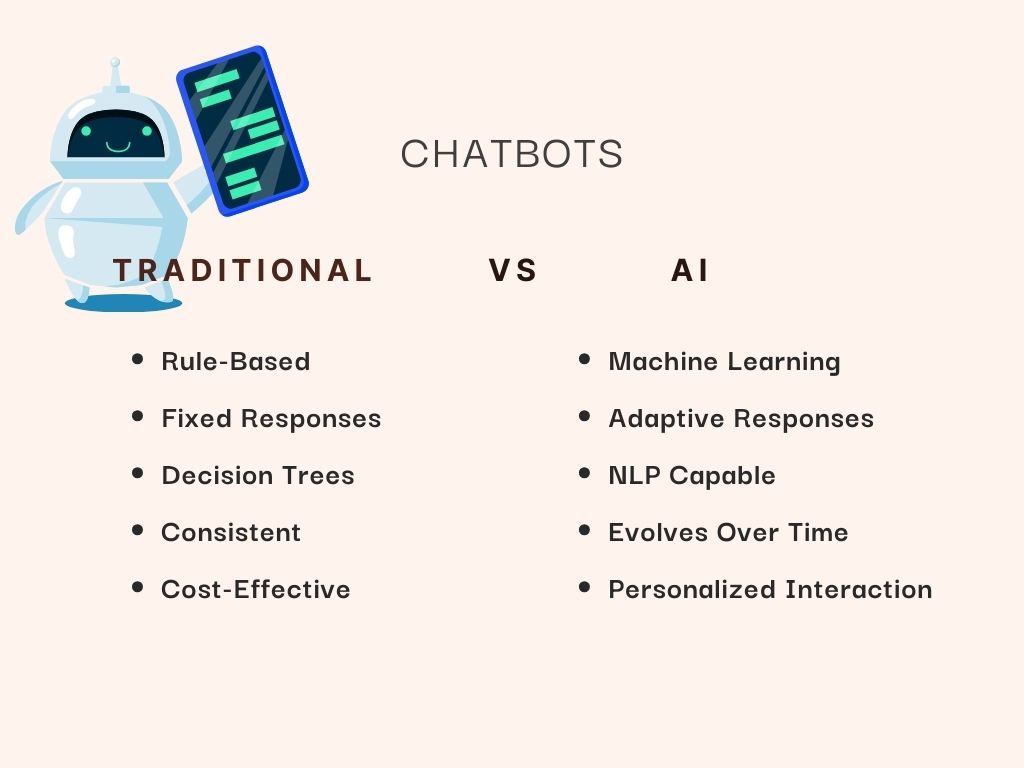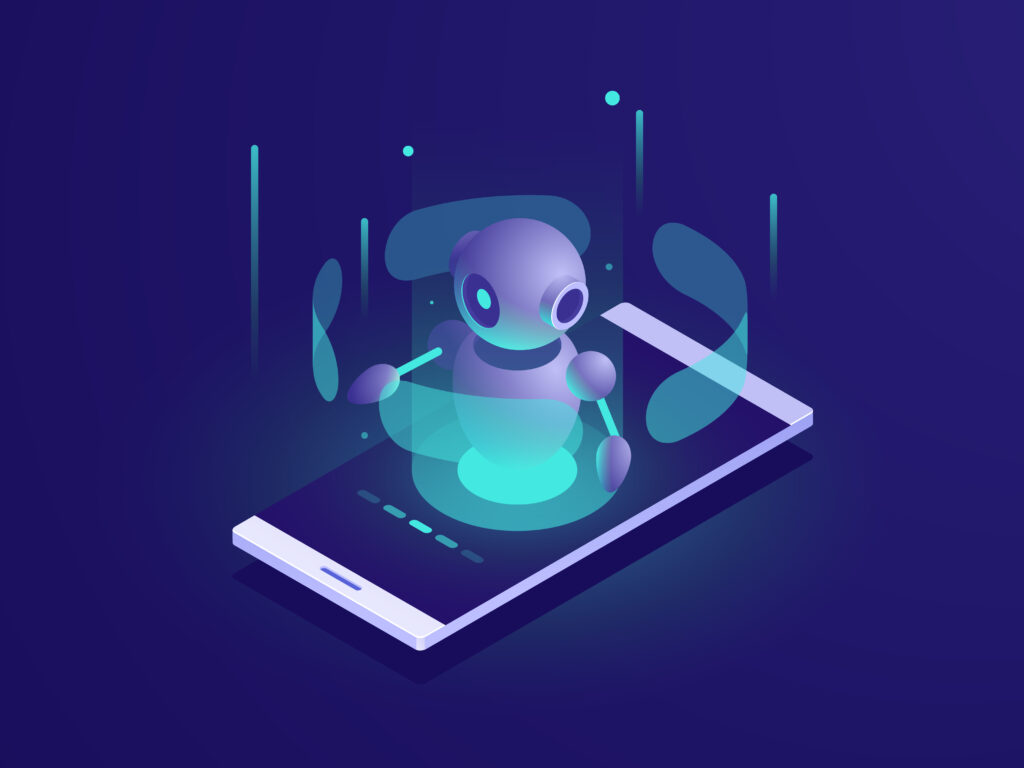In the dynamic landscape of digital customer service, the debate between Traditional Chatbot vs. AI Chatbot has taken center stage. As chatbots have emerged as undeniable game-changers, the distinction between traditional and AI-driven models becomes increasingly significant. While traditional chatbots have long served businesses with predefined response patterns, the advent of AI-powered chatbots promises a more adaptive and intuitive interaction. This article delves deep into the intricacies of both, aiming to guide businesses in making an informed choice tailored to their unique needs, weighing the pros and cons of Traditional Chatbot vs. AI Chatbot.
Traditional Chatbots
At their core, traditional chatbots are like interactive FAQs. They operate on a fixed set of rules and follow a decision-tree mechanism. If a user poses a question, the chatbot sifts through its programmed responses to find the best match. While they’re straightforward and relatively easy to set up, their capabilities are confined to the boundaries of their programming.
Pros of Traditional Chatbots:
- Simplicity: They’re straightforward to implement and manage.
- Cost-Effective: Lower initial investment compared to AI chatbots.
- Consistency: They offer predictable responses every time.
Limitations to Consider:
- Lack of Adaptability: Unlike AI chatbots, traditional ones can’t learn or adapt from user interactions. They remain static unless manually updated.
- Limited Scope: Their reliance on pre-defined responses means they can struggle with unexpected or nuanced queries, potentially leading to user frustration.
- Maintenance: As products, services, or information change, businesses need to manually update the chatbot’s database to ensure accuracy.
AI Chatbots: The Next Frontier
AI chatbots represent the cutting-edge convergence of machine learning and natural language processing (NLP). Unlike traditional chatbots that operate within the confines of pre-programmed responses, AI chatbots are dynamic entities that learn and evolve. They don’t just recognize keywords; they analyze user queries, understand the underlying intent, and craft responses that are contextually relevant. With each interaction, they gather more data, refining their algorithms to improve accuracy and efficiency over time.
Diving Deeper into AI Chatbot Mechanics
At the heart of AI chatbots is the ability to process language in a way that mirrors human understanding. Through NLP, they can discern nuances, emotions, and even slang. This allows them to engage in more natural and fluid conversations with users. Additionally, their machine learning capabilities enable them to identify patterns, predict user needs, and even proactively offer solutions before a user realizes they need them.
Pros of AI Chatbots:
- Adaptive Learning: With each interaction, they refine and optimize their responses, ensuring that users get better answers over time.
- Complex Query Handling: They’re adept at understanding intricate user queries, even those that traditional chatbots might find challenging.
- Personalization: By analyzing user behavior and past interactions, AI chatbots can offer tailored responses, significantly enhancing the user experience.
- Integration Capabilities: AI chatbots can seamlessly integrate with other business systems, such as CRM platforms, to fetch real-time data and provide users with up-to-date information.
Challenges to Consider:
- Ongoing Training: To maintain their efficiency, AI chatbots need continuous training, especially when introduced to new products, services, or terminologies.
- Data Privacy Concerns: Since AI chatbots learn from user interactions, businesses must ensure that they handle and store user data responsibly, adhering to privacy regulations.

Which One Aligns with Your Business Needs?
The decision between traditional and AI chatbots isn’t black and white; it hinges on your business’s specific requirements, budgetary constraints, and long-term vision.
1. Evaluate the Complexity of Customer Queries:
- If your business frequently encounters complex and varied customer queries, an AI chatbot’s adaptive learning capabilities might be invaluable.
- For businesses with more straightforward and repetitive queries, a traditional chatbot might suffice.
2. Consider the User Experience:
- AI chatbots can offer a more dynamic and personalized interaction, enhancing user satisfaction.
- Traditional chatbots provide a more structured and consistent interaction, which might be preferable for some businesses.
3. Budgetary Constraints:
- AI chatbots demand a higher initial investment, both in terms of finances and time. However, their ability to learn and adapt can offer long-term value.
- Traditional chatbots are more budget-friendly initially but might require regular updates to stay relevant.
4. Future-Proofing Your Business:
- If you’re looking to stay ahead of the curve and invest in technology that can evolve with time, AI chatbots are the way forward.
- Traditional chatbots, while effective, might not offer the same level of future adaptability.
The chatbot landscape is vast, and the decision between traditional and AI chatbots is nuanced. It’s crucial to assess your business’s current needs, future aspirations, and available resources. While AI chatbots offer advanced capabilities and adaptability, traditional chatbots bring simplicity and consistency to the table. Whichever path you choose, ensure it aligns with your vision of offering unparalleled customer service.
Navigating the world of chatbots can be intricate, but you don’t have to do it alone. At Mango AI Labs, we specialize in crafting state-of-the-art chatbot solutions tailored to your business needs. Whether you’re leaning towards a traditional chatbot or envisioning an AI-powered assistant, our team of experts is here to guide and transform your vision into reality. Dive into the future of seamless customer interactions and elevate your business to new heights. Step ahead of the curve with Mango AI Labs. Connect with us today, and together, let’s redefine the future of customer interactions!
Image by fullvector on Freepik




